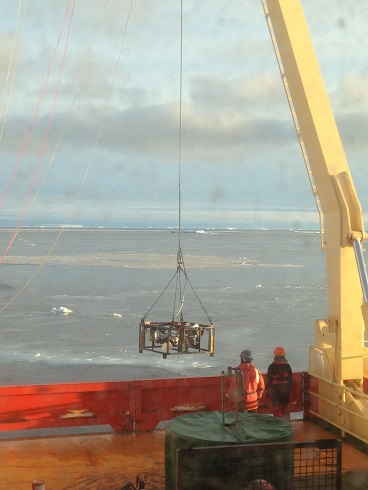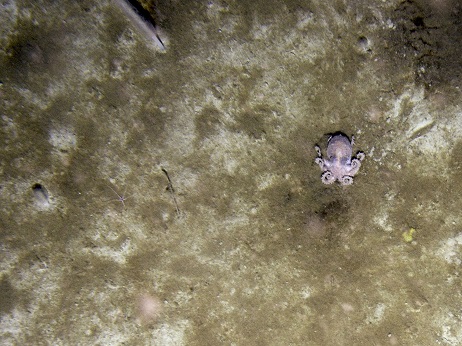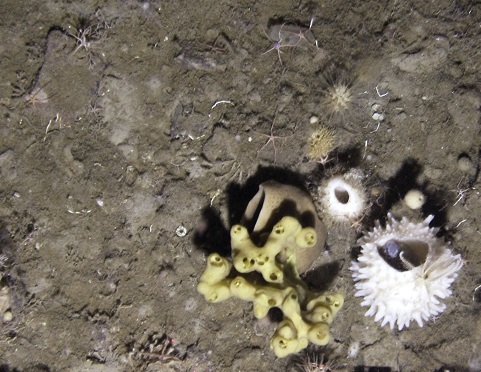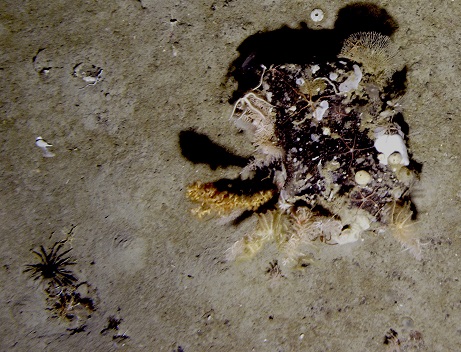Today was a perfect weather day. The winds were light and the sky was clear. Visibility seemed unlimited. We spent a lot of the day processing a mega core and a JPC. They collect sediment samples that are used to look for the remains of diatoms and forams, among other things. The diatoms produce a glasslike shell that can be dated. The forams (foraminifera) are primitive zooplankton. Both specimens provide a wealth of physical data as to past glacial activity. It takes all day to do the work but the data will be very useful. We have gathered and processed a significant amount of specimens. The marine geologists are happy with what has been found.
The Yo Yo Camera


I have spoken about many of the pieces of equipment that all the scientists have been using. As we are only a few days from packing up and heading home, many have been put away. One of these is the Yo Yo camera. The name comes from its up and down motion as it travels deep into the sea. It is equipped with a remote controlled motor and lights. The yo yo as it is called on board provides a fish eyes view of the ocean floor.
If you have been following the journal (blog) entries each day you have probably realized that we spend a lot of time working the sea floor. It is because it holds so much information. Kind of like reading the rings on a tree to determine its age, we use these sediments much in the same way. It is important to have past history to compare what is happening now.

Using the yo yo allows the scientists to do a kind of reconnaissance of the bottom. I thought you might like to see a few creatures that inhabit the deep waters of the Southern Ocean. I find it so amazing how incredibly tough and well adapted these species must be.

It is hard for me to fathom (no pun intended) what it must be like to survive in total darkness under such pressure. We have a few biologists on board who specialize in Antarctic wildlife. It is nice to see how they become so excited even after years of experience. I guess it only goes to show how unique this region is. We are winding down quickly. Tomorrow we will be working the edge of the sea ice. We expect to see a lot of animals. I better clean the lenses of my binoculars.


Comments